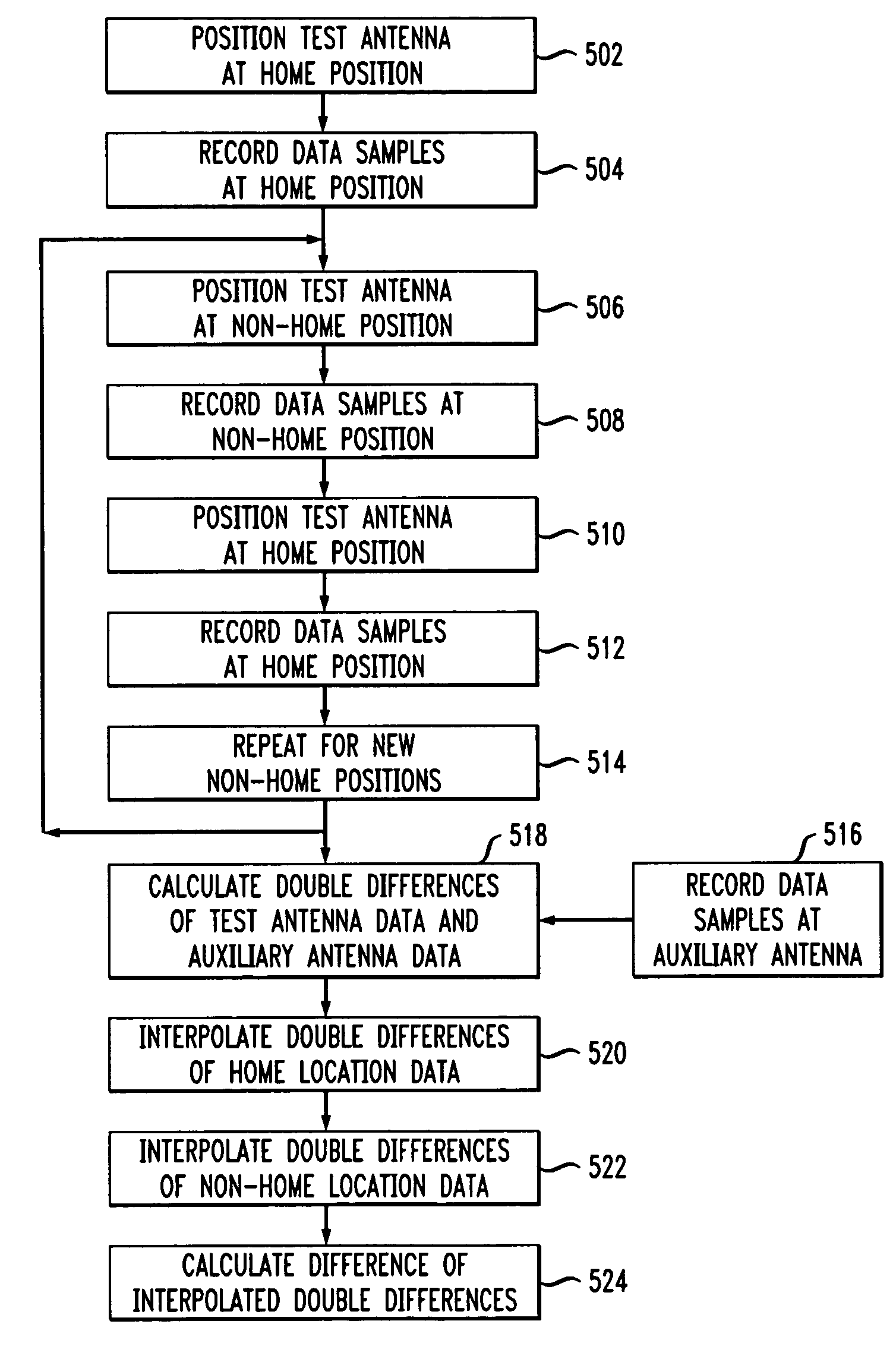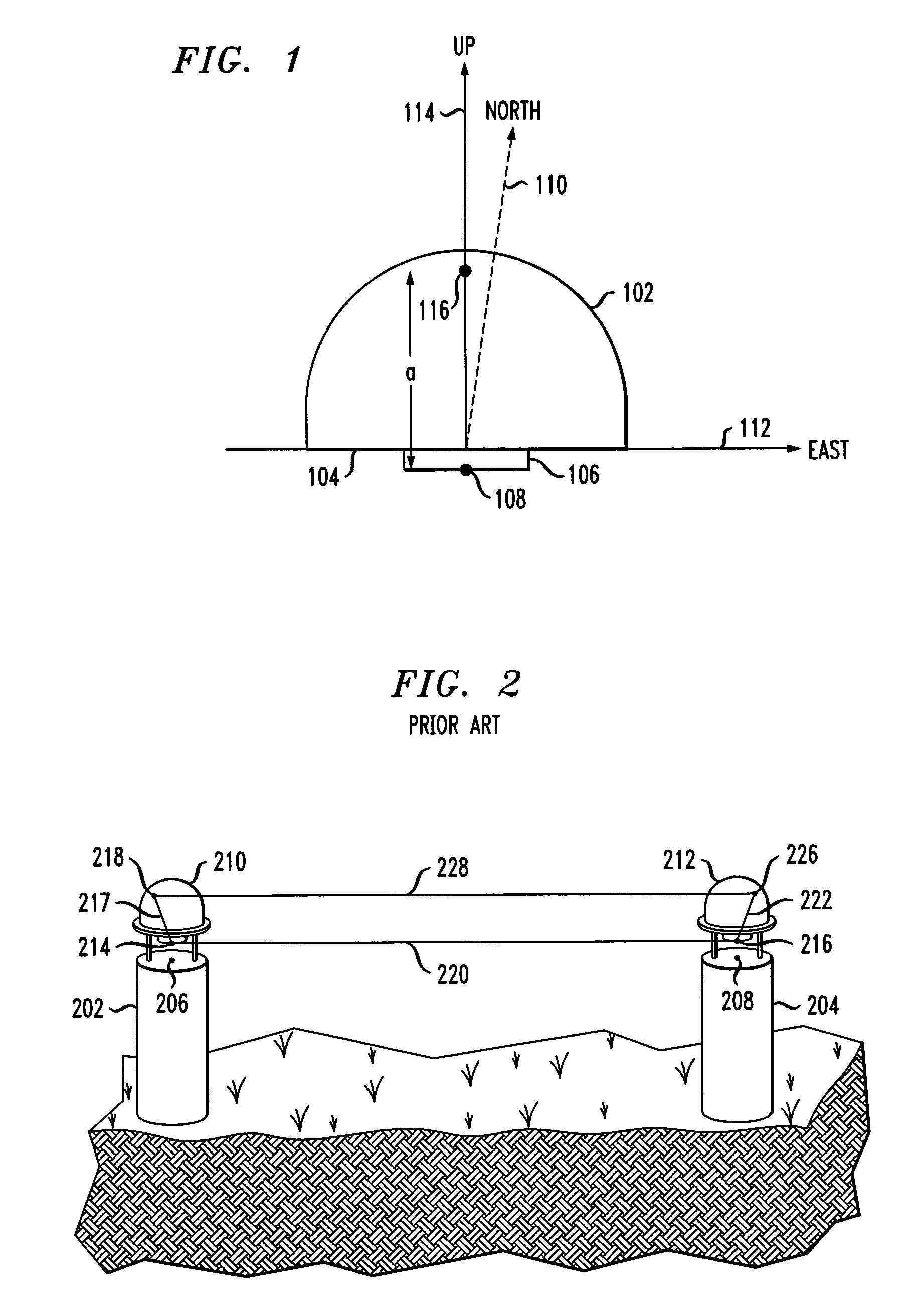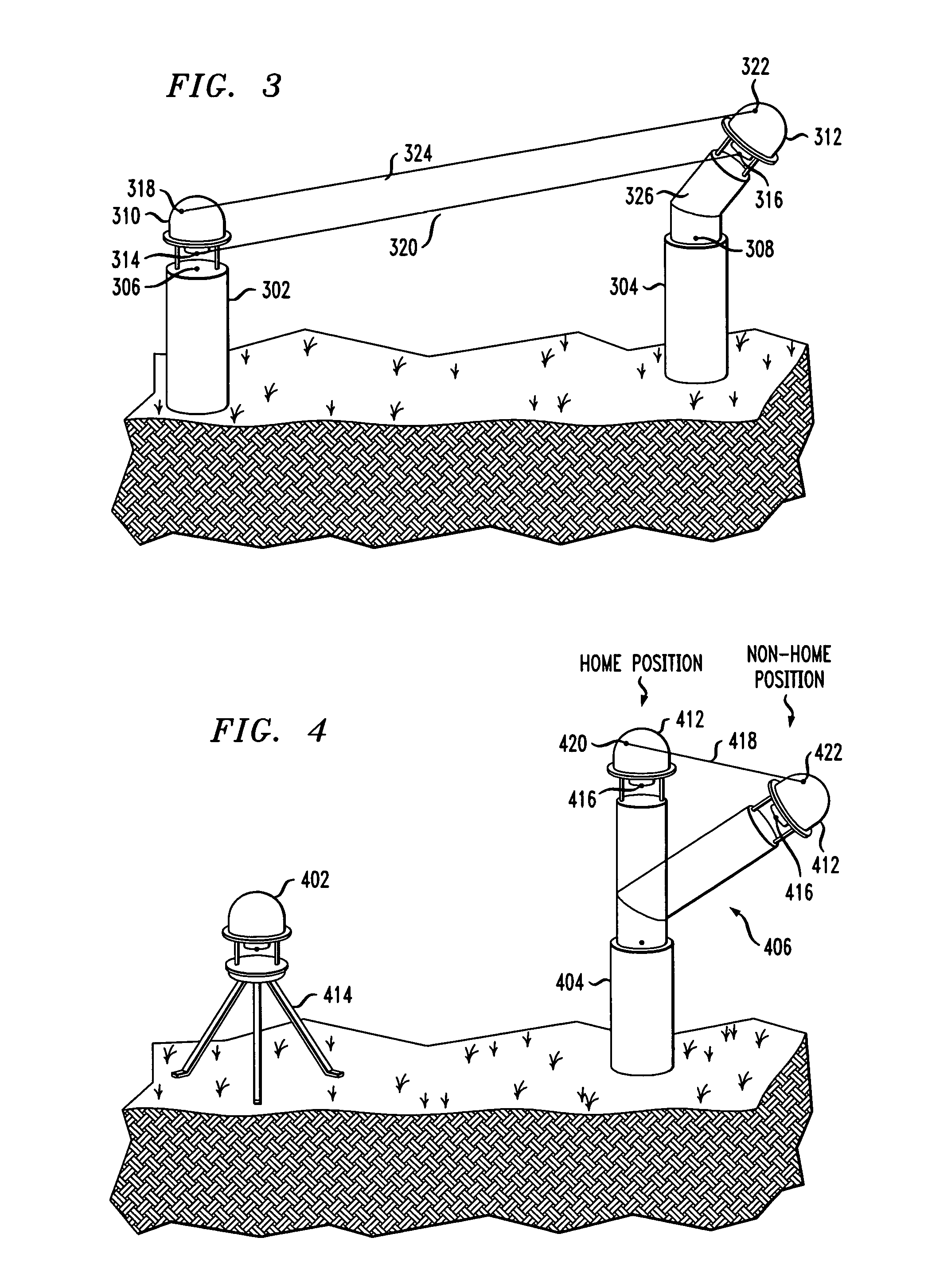Method for absolute calibration of global navigation satellite system antennas
an antenna and global navigation technology, applied in the field of absolute calibration of global navigation satellite system antennas, can solve the problems of significant consistency, inaccurate absolute calibration of antennas, and inability to provide absolute phase calibration of tested antennas, etc., and achieve the effect of accurate absolute antenna calibration
- Summary
- Abstract
- Description
- Claims
- Application Information
AI Technical Summary
Benefits of technology
Problems solved by technology
Method used
Image
Examples
Embodiment Construction
[0025]FIG. 1 shows a geometric diagram of a GPS antenna in a coordinate system. The figure shows a cross section of an antenna having a half-sphere enclosure 102, a base 104, and a low noise amplifier (LNA) 106. This type of antenna is well known in the art of GPS antennas. The antenna reference point (ARP) 108 is a known physical point on the antenna, typically located at the base of the LNA 106 as shown in FIG. 1. It is conventional to express phase center location as a triad in terms of north, east, and up coordinates, with each of the coordinates expressed in mm. This coordinate system is shown in FIG. 1 with a north axis 110, an east axis 112, and an up axis 114. Consider now that the antenna has a phase center 116 located on the up axis which is coincident with the axis of symmetry of the antenna at a distance of a mm above the ARP 108. Assuming a satellite directly overhead, the voltage front from the satellite will activate the phase center 116. Thus, relative to the ARP 108...
PUM
 Login to View More
Login to View More Abstract
Description
Claims
Application Information
 Login to View More
Login to View More - R&D
- Intellectual Property
- Life Sciences
- Materials
- Tech Scout
- Unparalleled Data Quality
- Higher Quality Content
- 60% Fewer Hallucinations
Browse by: Latest US Patents, China's latest patents, Technical Efficacy Thesaurus, Application Domain, Technology Topic, Popular Technical Reports.
© 2025 PatSnap. All rights reserved.Legal|Privacy policy|Modern Slavery Act Transparency Statement|Sitemap|About US| Contact US: help@patsnap.com



